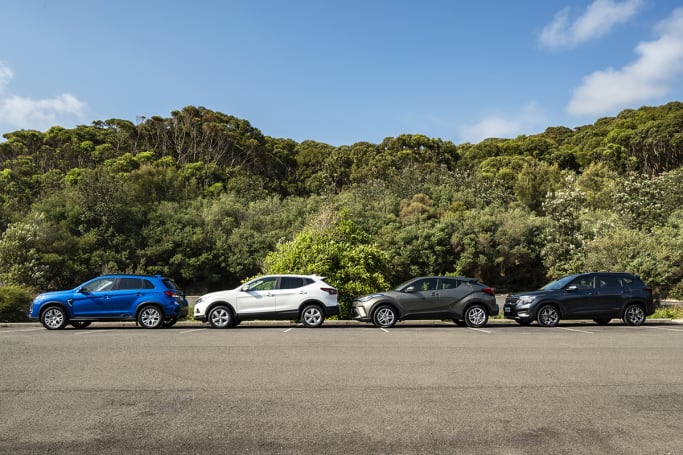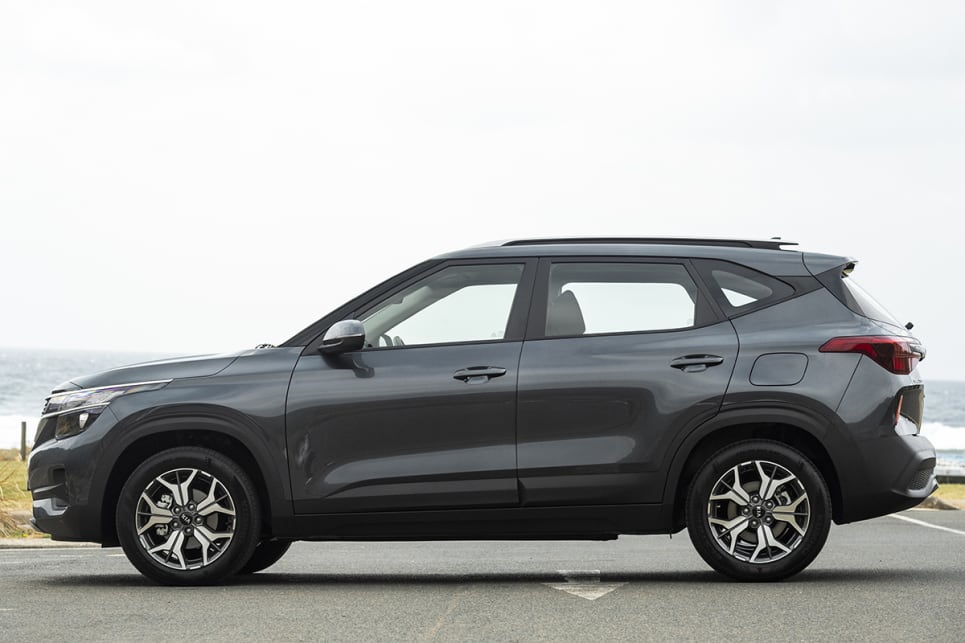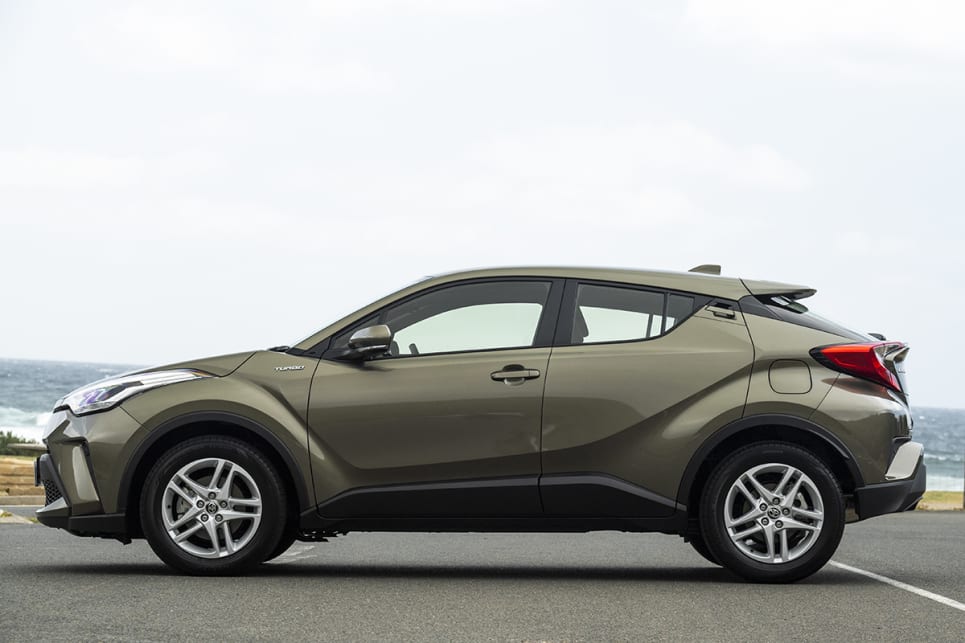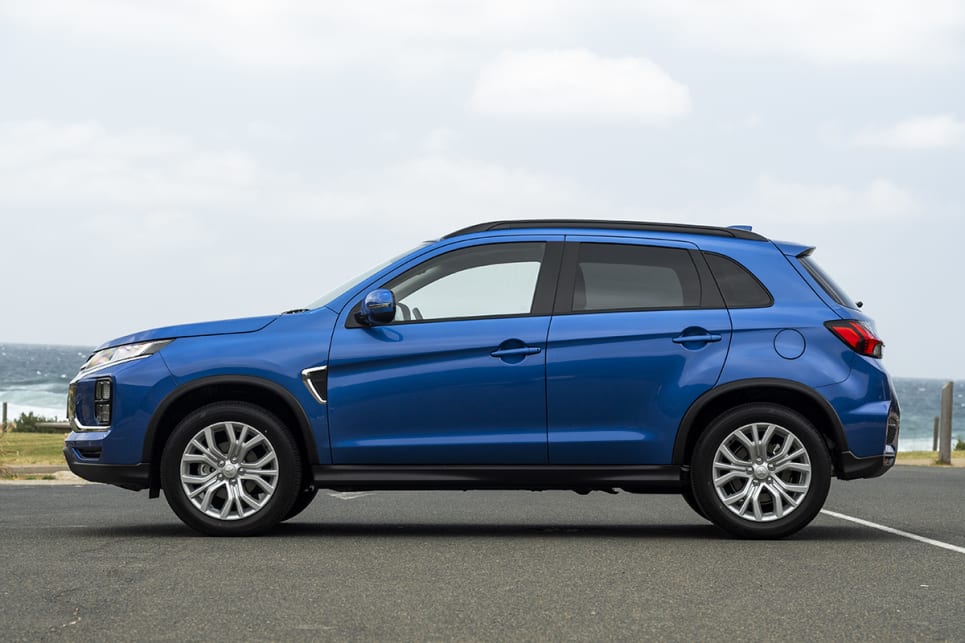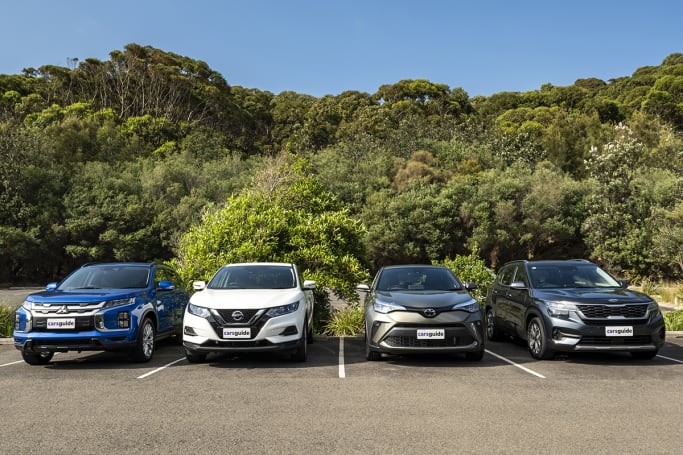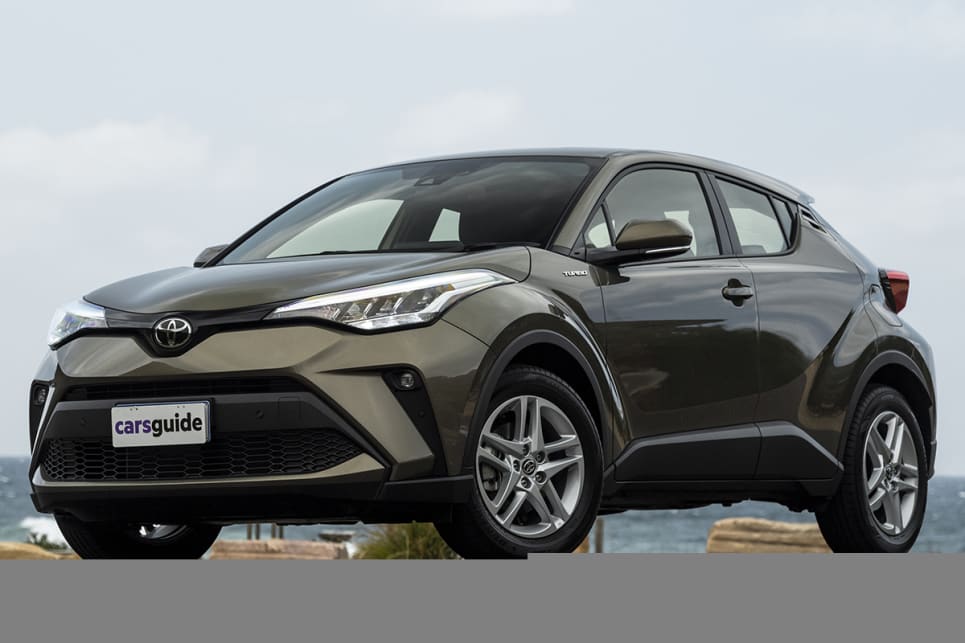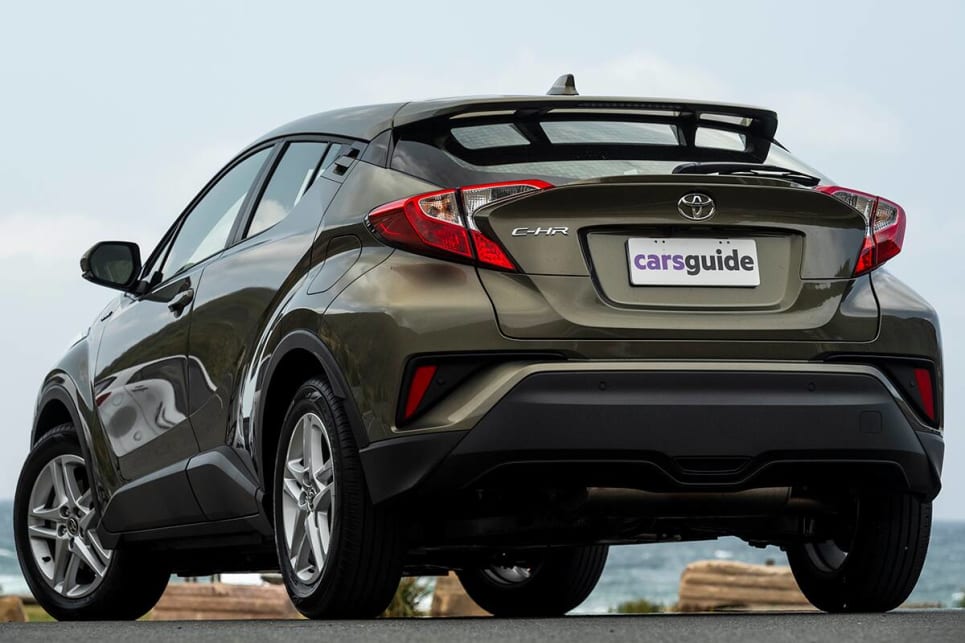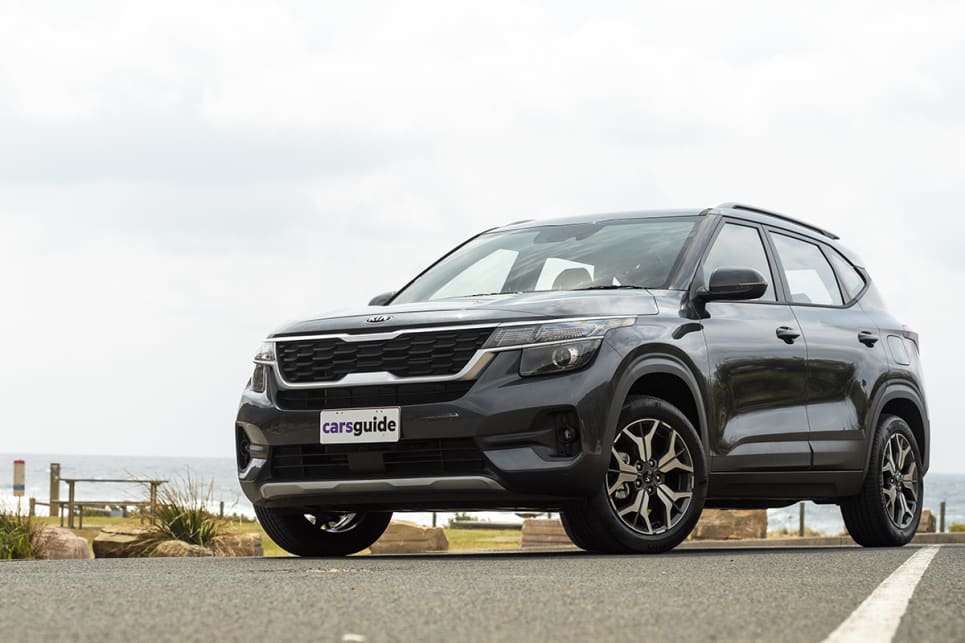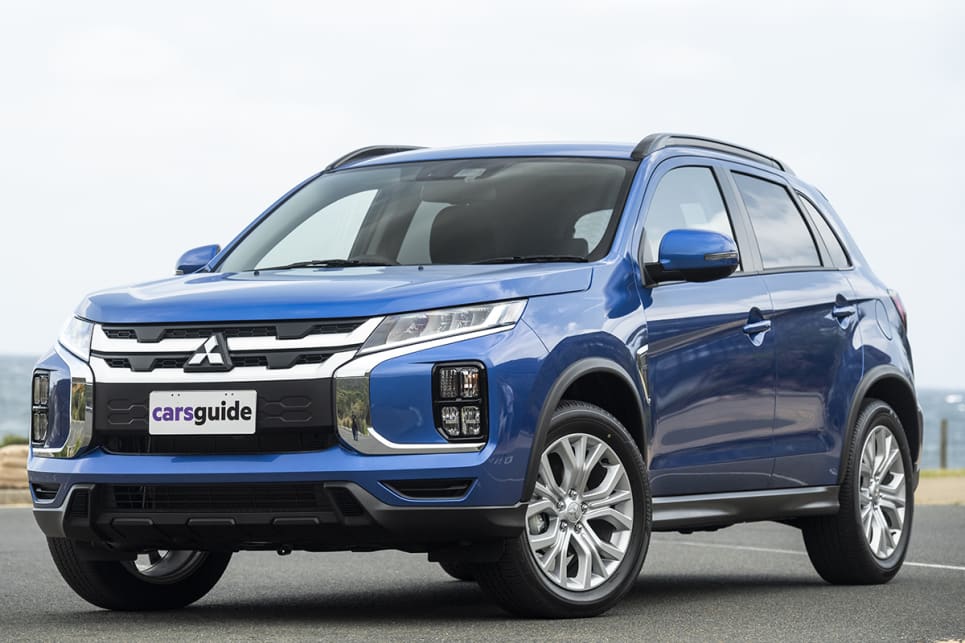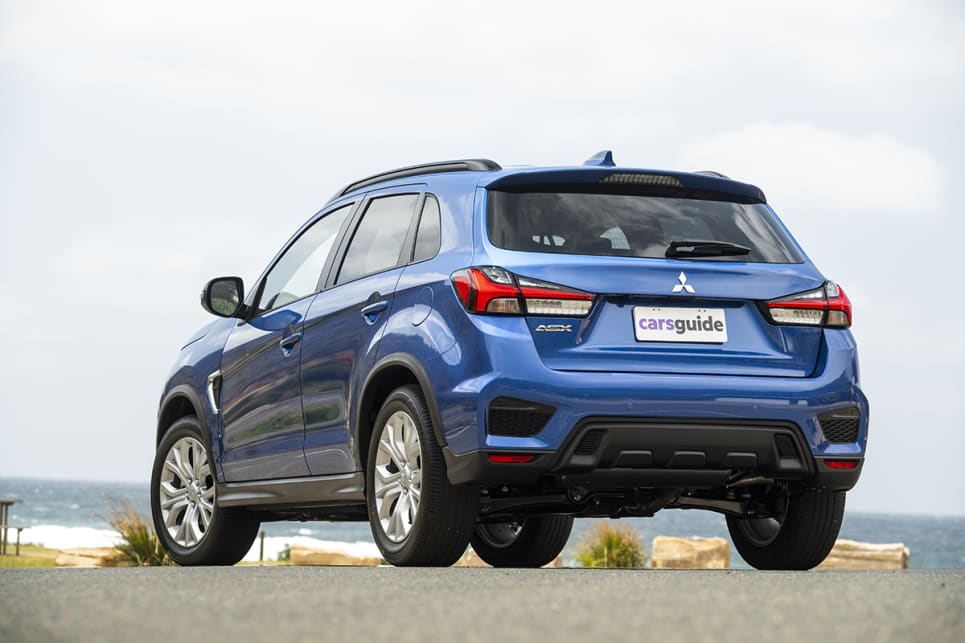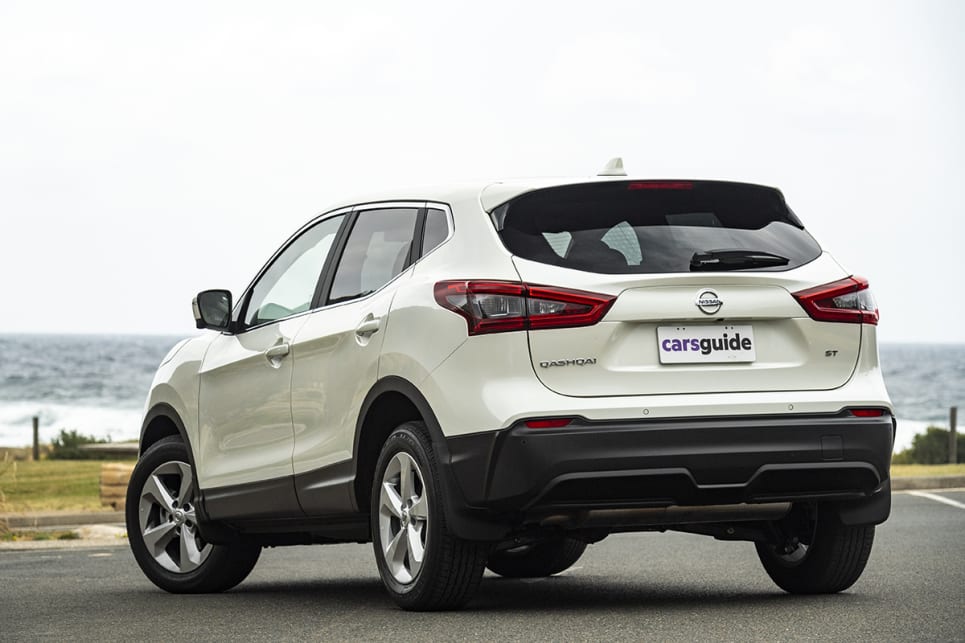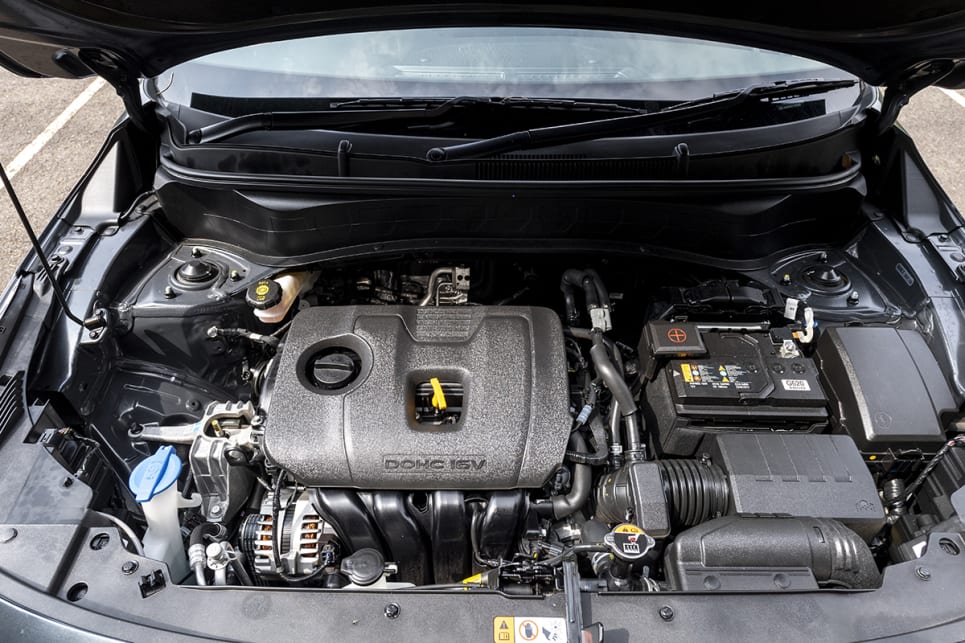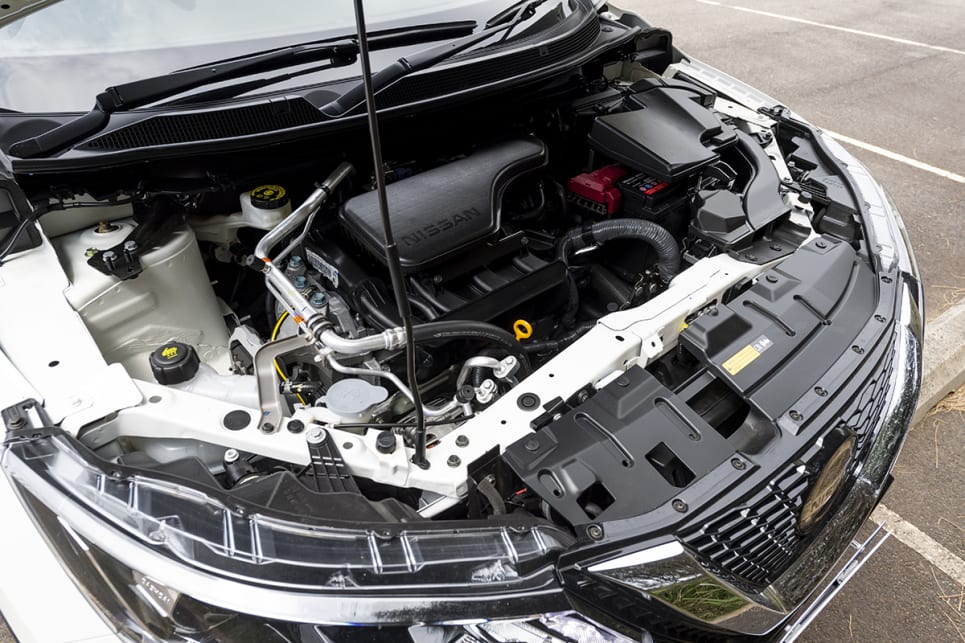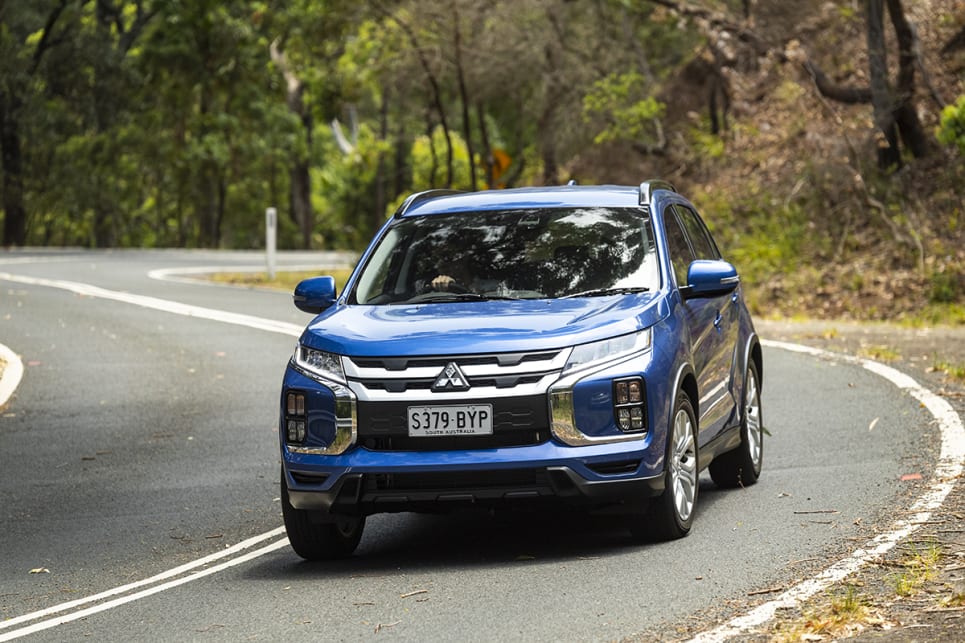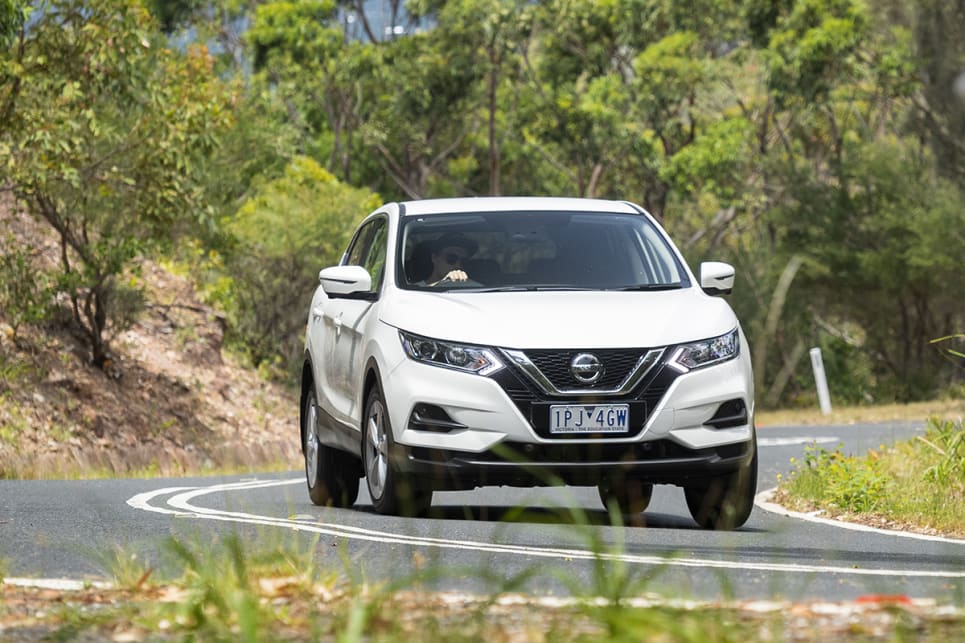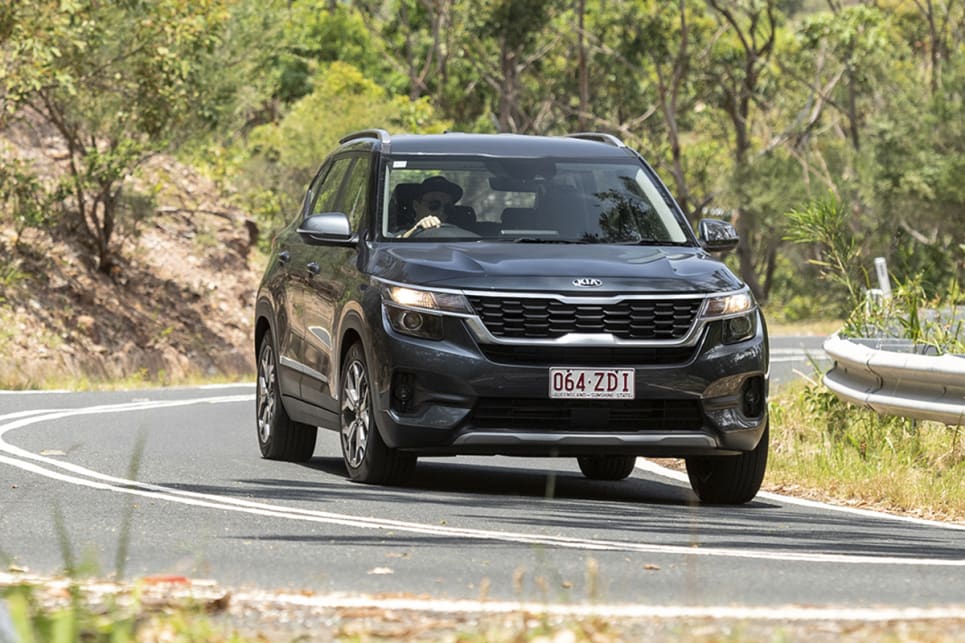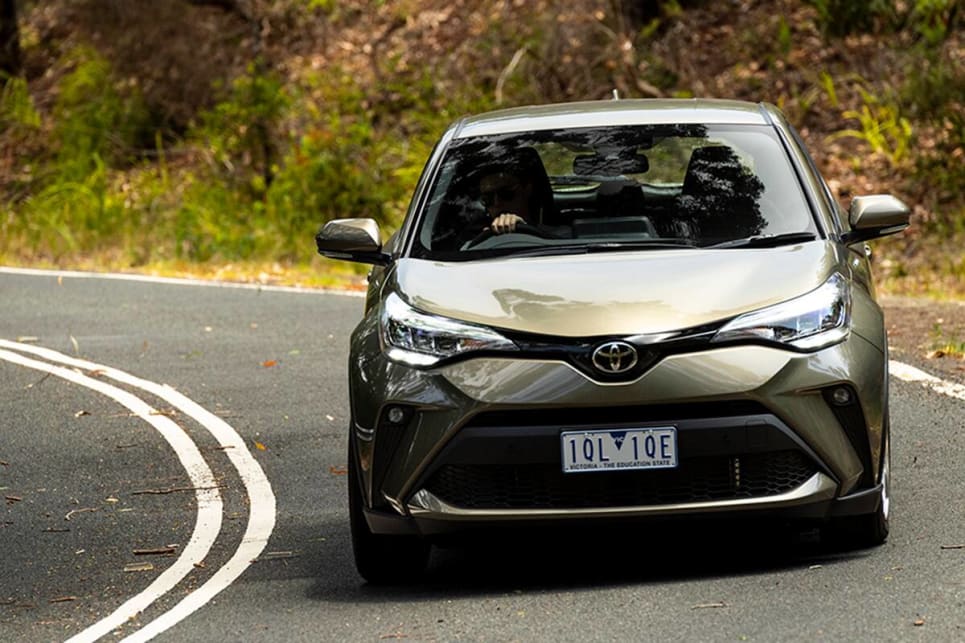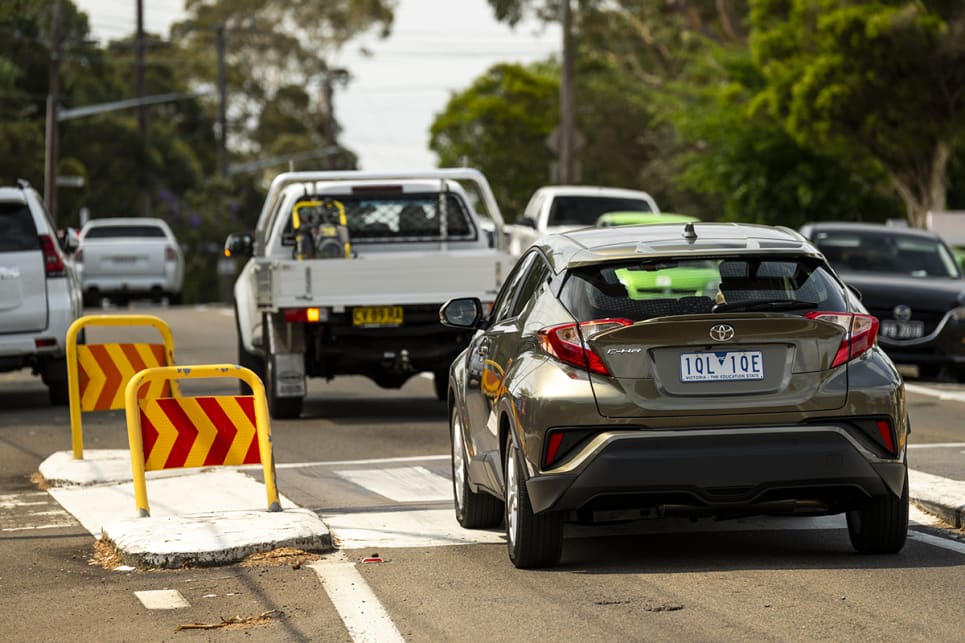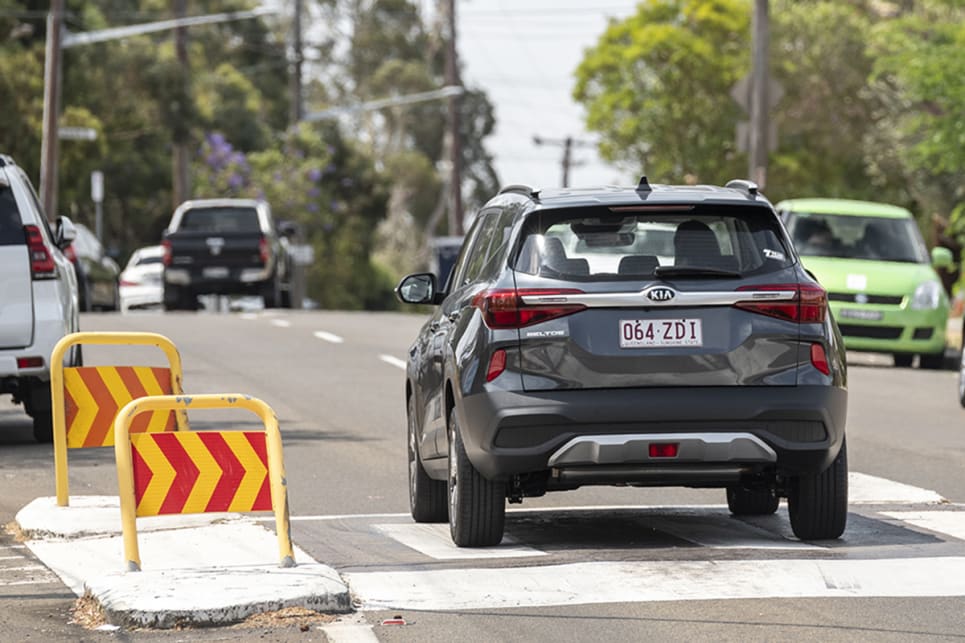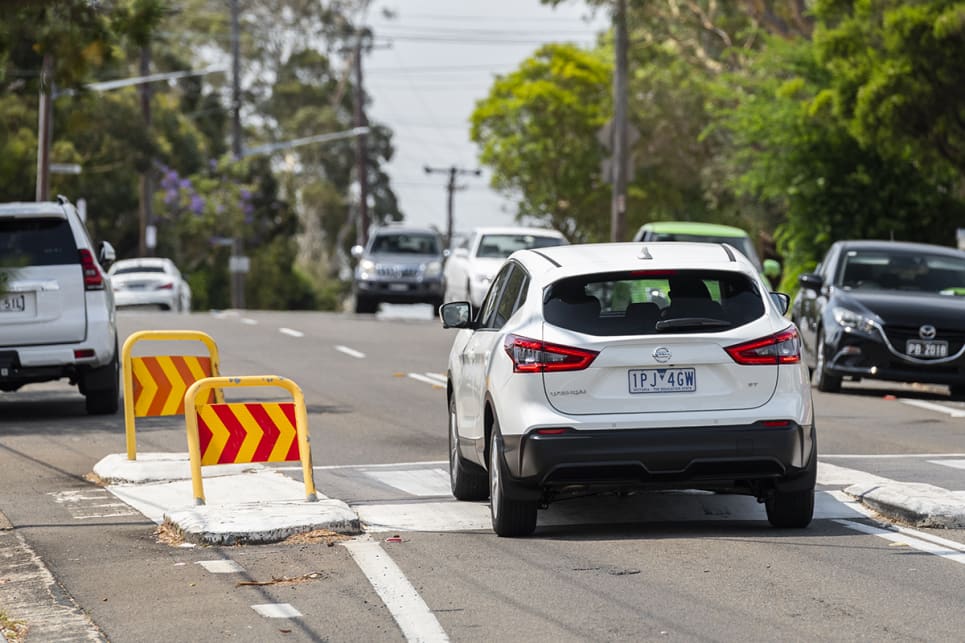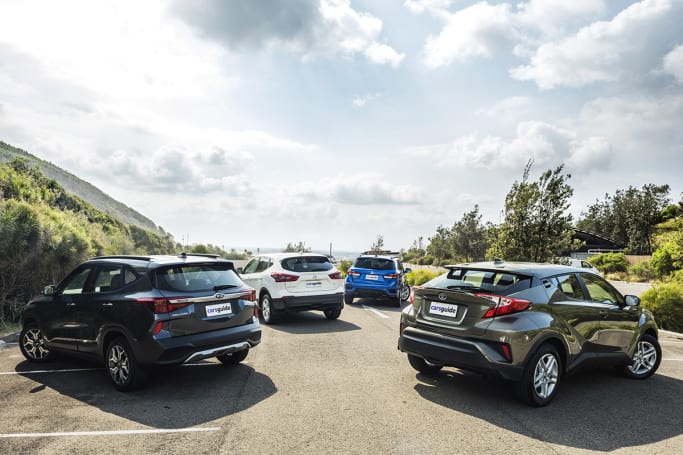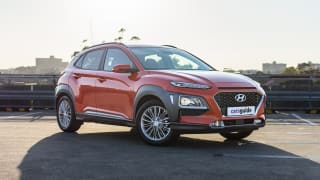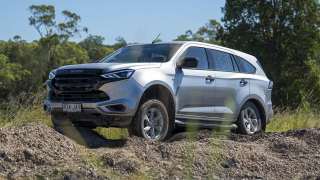They all have five seats and five doors, but there are differences between them when it comes to cabin practicality and presentation.
First up, let’s consider the size of these models. Below you’ll find the dimensions of each of these compact SUVs - and it’s very, very close. In fact, the difference in length is less than the width of an Australian 50 cent coin: there’s just 29mm splitting shortest to longest when it comes to their length.
| Toyota C-HR | Kia Seltos Sport w/safety | Mitsubishi ASX LS | Nissan Qashqai ST+ |
Length | 4390mm | 4370mm | 4365mm | 4394mm |
Wheelbase | 2640mm | 2630mm | 2670mm | 2646mm |
Width | 1795mm | 1800mm | 1810mm | 1806mm |
Height | 1565mm | 1615mm | 1640mm | 1595mm |
Boot capacity (litres) | 318L | 433L | 393L | 430L |
As you can see, the boot space varies greatly between these models, and as we found in our testing, the usable space is still decent across the board. Only the C-HR couldn’t fit all three suitcases in the boot with the cargo cover in place, and it was touch-and-go for all three fitting with the tailgate closed (in fact, it only just fit the two larger ones). All three cases fit them all in without much hassle.
-
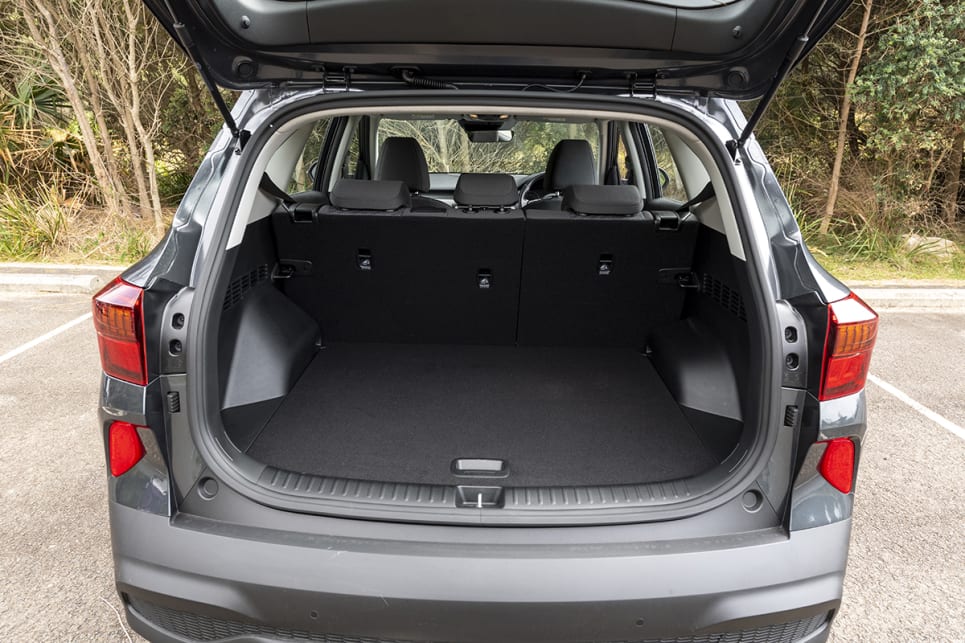 Kia Seltos with rear seats in place.
Kia Seltos with rear seats in place.
-
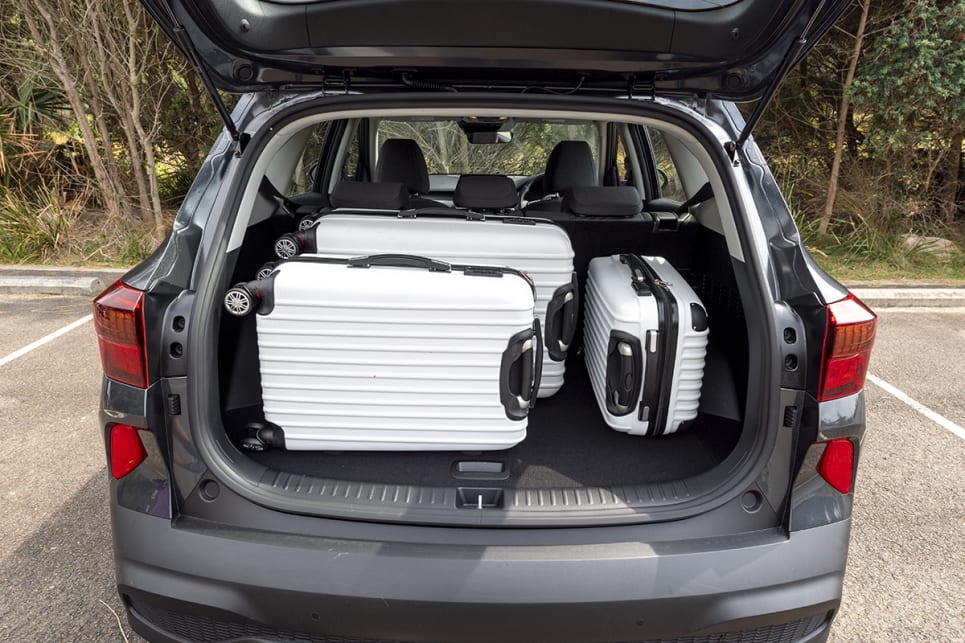 Kia Seltos with luggage.
Kia Seltos with luggage.
-
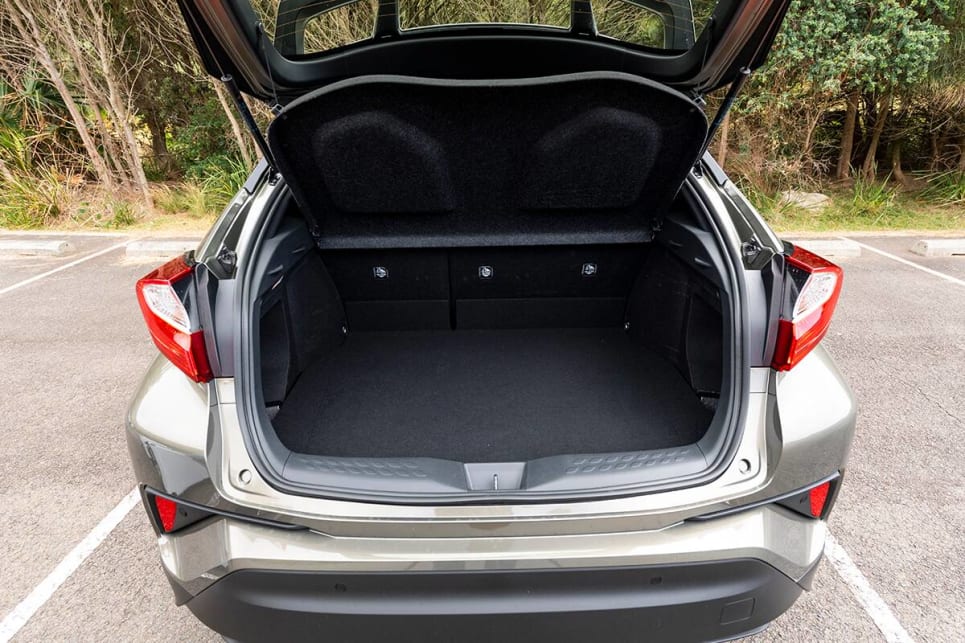 Toyota C-HR with rear seats in place.
Toyota C-HR with rear seats in place.
-
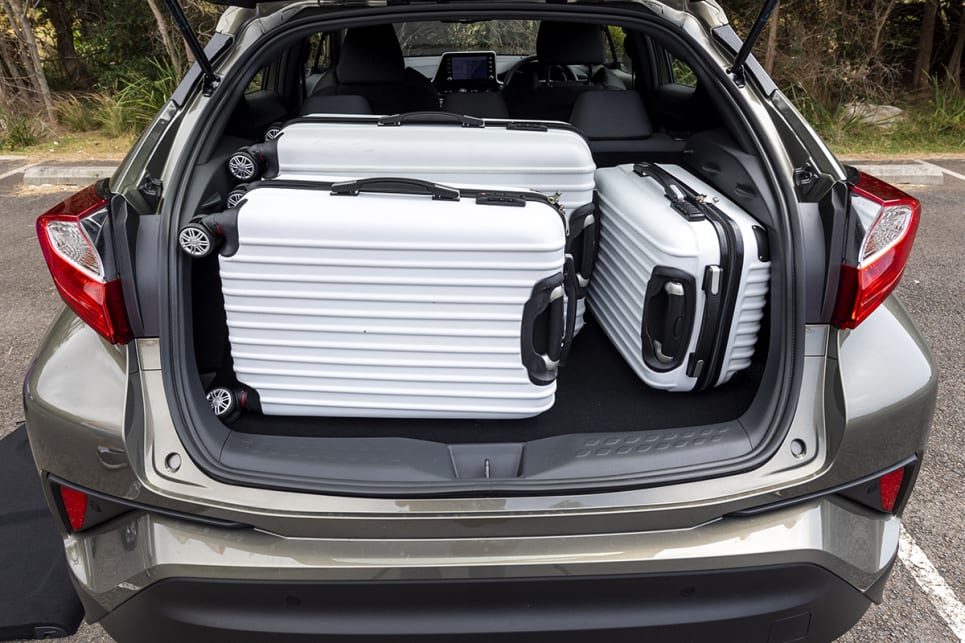 Toyota C-HR with luggage.
Toyota C-HR with luggage.
-
 Nissan Qashqai with rear seats in place.
Nissan Qashqai with rear seats in place.
-
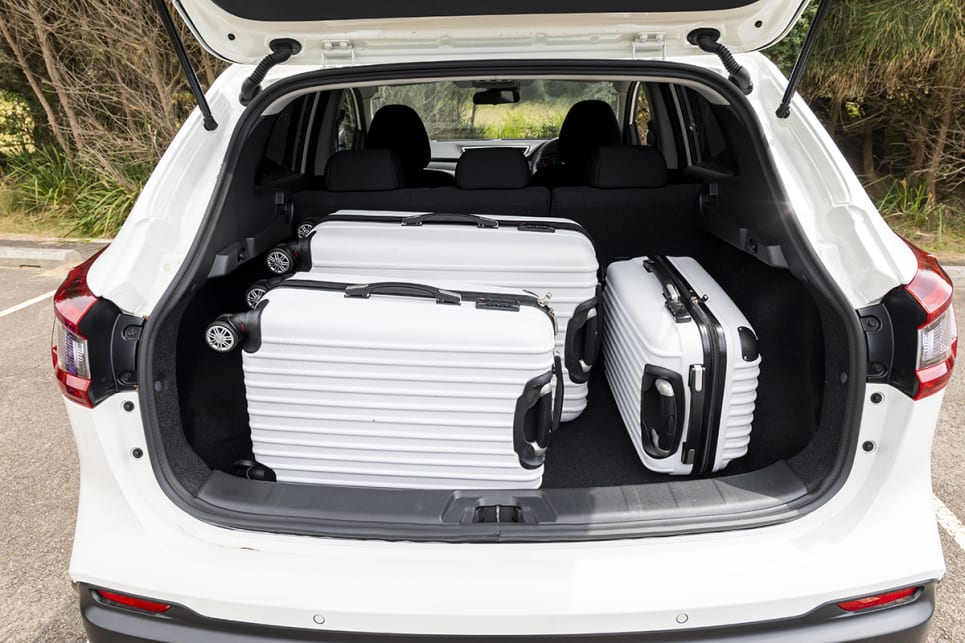 Nissan Qashqai with luggage.
Nissan Qashqai with luggage.
-
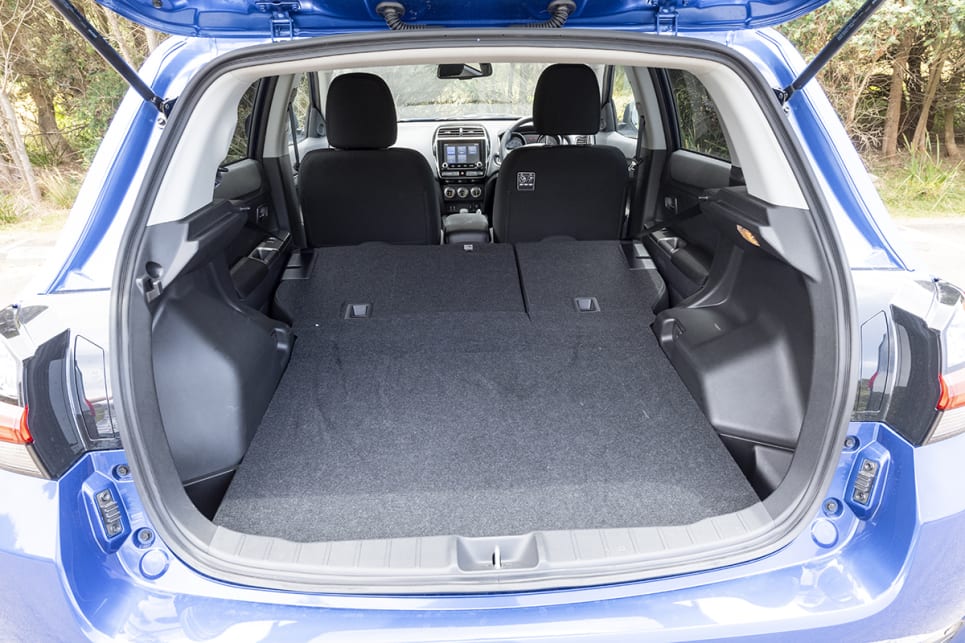 Mitsubishi ASX with rear seats folded down.
Mitsubishi ASX with rear seats folded down.
-
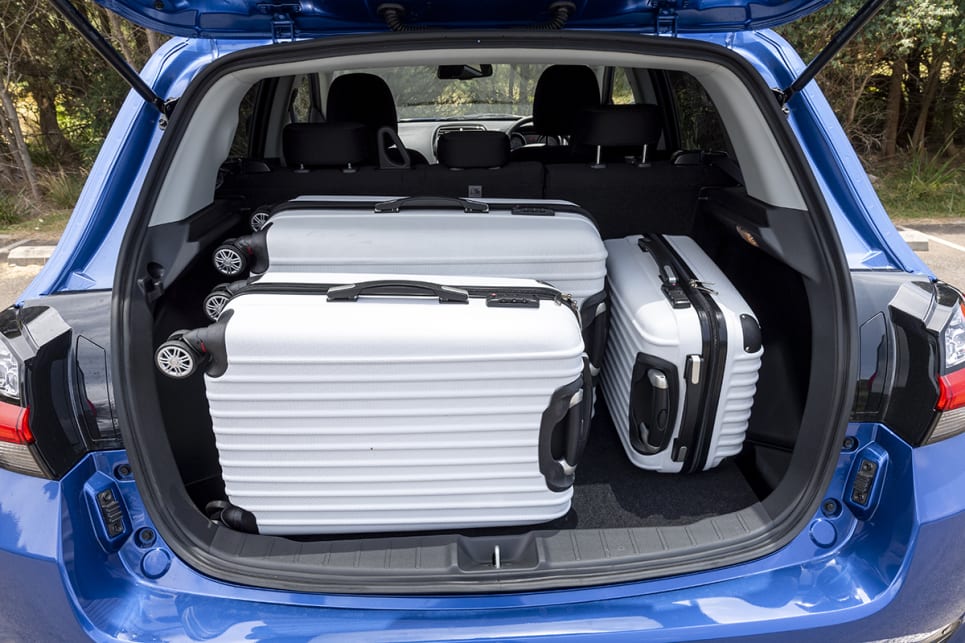 Mitsubishi ASX with luggage.
Mitsubishi ASX with luggage.
The trusty (bulky) CarsGuide pram fit in the boot of all four SUVs, too, but in the C-HR and ASX there was a bit less space for the baby-themed extras you might need to take with you.
All of these SUVs have split-fold rear seats, though only the Kia has a full-size spare wheel under its boot floor. You miss out on a cargo cover in the Kia, however.
As for back seat passenger space, these ‘small’ SUVs have decent room on offer - I set the driver’s seat for myself (182cm) and slotted in behind that spot in each of them to see how they compared.
You might think the ASX having the longest wheelbase would translate to the most second-row space - but you’d be wrong. In fact, the ASX had the worst legroom of this mix, and it also had the least comfortable back seat. The C-HR had the most comfortable back seat.
The C-HR and Qashqai were about on par for back seat space, while the Seltos offered the most space in the second-row. Headroom was good in all models, but the Kia felt the widest and most accommodating overall.
The C-HR suffers a terrible design flaw in the back - the way the rear window scoops up means you’re left with a windows about the same size as an A4 sheet of paper, which could be car sickness-inducing, and certainly made our testers feel claustrophobic. But that may not matter to you - there are plenty of small SUV buyers that are single, or couples without kids.
-
 The ASX had the least comfortable back seat.
The ASX had the least comfortable back seat.
-
 The C-HR suffers a terrible design flaw in the back.
The C-HR suffers a terrible design flaw in the back.
-
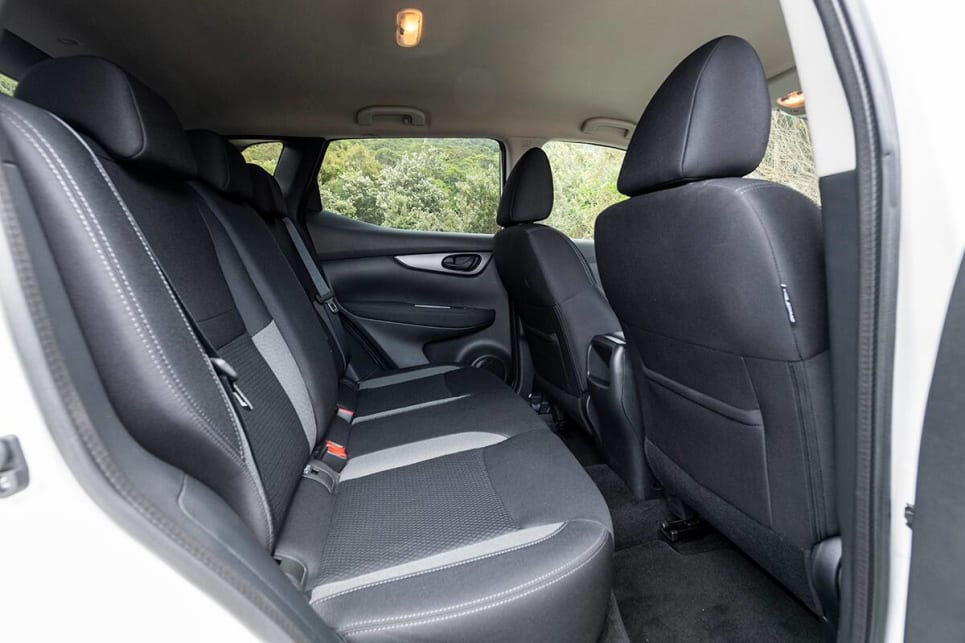 The Qashqai was about on par for back seat space with the C-HR.
The Qashqai was about on par for back seat space with the C-HR.
-
 The Seltos offered the most space in the second-row.
The Seltos offered the most space in the second-row.
None of these cars have rear-seat air vents, and the storage on offer differs, too. The ASX doesn’t have door pockets, the C-HR has small bottle holders in the door armrests, while the others have decent storage with bottle holders in the doors. Only the ASX gets a centre armrest with cupholders, the others all miss out, while the map pocket count is as follows: C-HR - 0; Seltos - 0; ASX - 1; Qashqai - 2.
The front seat spaces are all vastly different in terms of presentation and practicality, too.
The ASX is the plainest and oldest looking inside, but the controls (although budget feeling) are logically placed and the storage options are fine.
The Qashqai feels the second-most modern inside, with decent storage though the cabin, a few nicer finishes here and there, but seats that feel a little small. We loved the flat-bottom steering wheel, but the media system? We’ll touch on that below.
The Kia Seltos steps things up with the biggest screen here, and it looks considerably more modern in its design too. The storage game is strong, but the materials - aside from the lovely blue-check cloth seats - could be better. There’s hard plastic all over the place, including the door arm rests. Yes, there is a softer plastic on the centre console bin, but I drove this Seltos for six hours during this loan, and it was quite uncomfortable to not have somewhere soft to rest your arm when you’re driving.
-
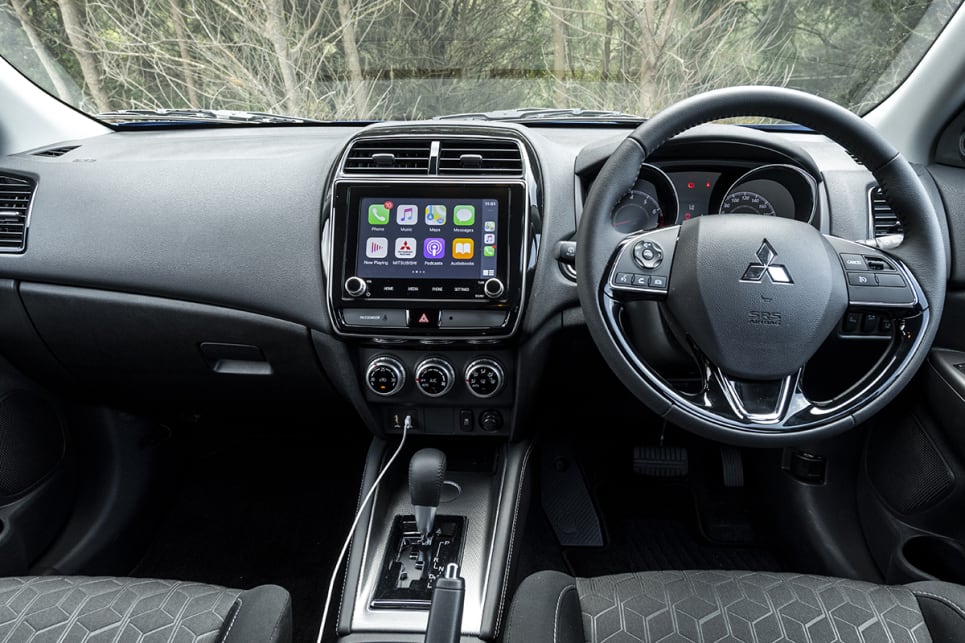 The ASX is the plainest and oldest looking inside.
The ASX is the plainest and oldest looking inside.
-
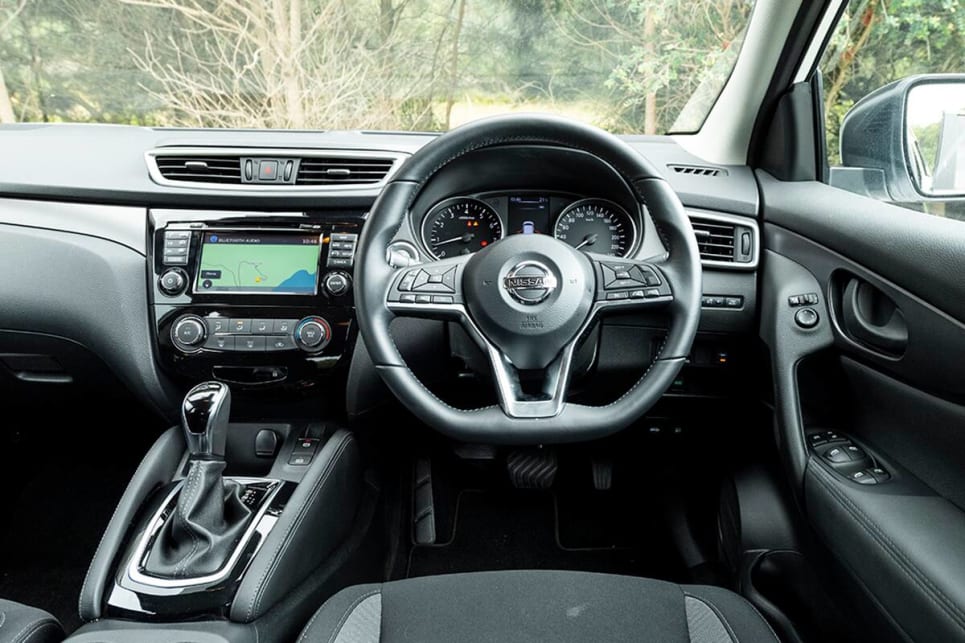 The Qashqai feels the second-most modern inside.
The Qashqai feels the second-most modern inside.
-
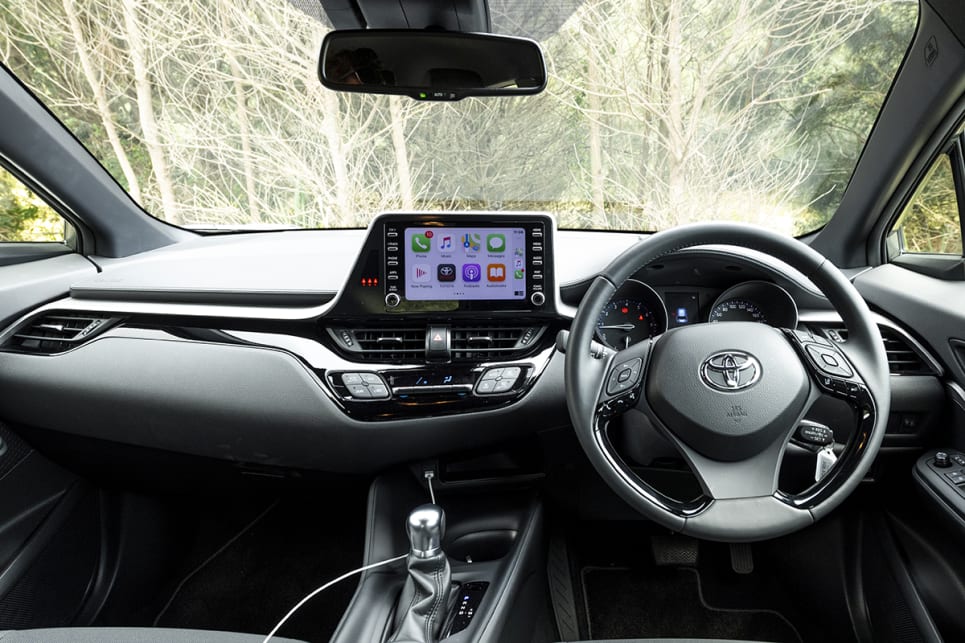 Our pick for front-seat environs was the C-HR.
Our pick for front-seat environs was the C-HR.
-
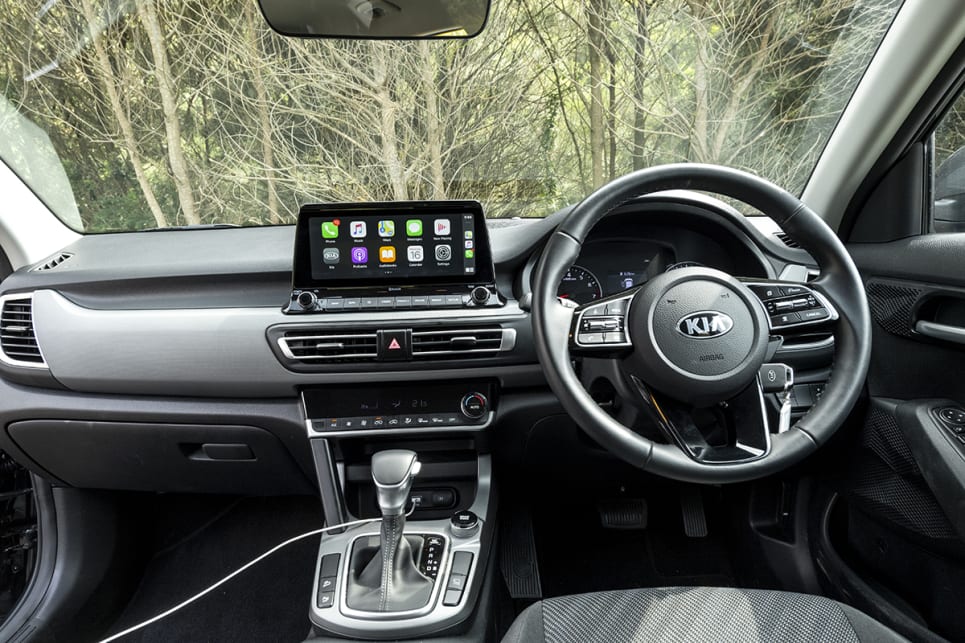 The Kia Seltos steps things up with the biggest screen here.
The Kia Seltos steps things up with the biggest screen here.
Our pick for front-seat environs was the C-HR. It has a superb look and feel to it, with soft finishes to the dash and doors, and a really modern design. We don’t like how much the dashboard juts into the passenger’s space, but the seats were the most comfortable, and yes - this is one Toyota that now has smartphone mirroring for the media system.
Let’s take a look at how the media systems of each of these models compare.
| Toyota C-HR | Kia Seltos Sport w/safety | Mitsubishi ASX LS | Nissan Qashqai ST+ |
Sound system (standard equipment) | 6 speakers | 6 speakers | 4 speakers | 6 speakers |
USB count | 1 | 2 | 2 | 1 |
Bluetooth phone and audio streaming | Yes | Yes | Yes | Yes |
DAB radio | Yes | Yes | Yes | Yes |
Touch screen size | 8.0-inch | 10.25-inch | 8.0-inch | 7.0-inch |
Apple CarPlay | Yes | Yes | Yes | Coming in 2020 |
Android Auto | Yes | Yes | Yes | Coming in 2020 |
Sat nav | Yes | Yes | No | Yes |
Wireless phone charing (Qi) | No | No | No | No |
We found the Nissan’s screen to be the worst to use in pretty much all aspects - slow and difficult to connect to Bluetooth, bad menu navigation and poxy display graphics. But if you’re reading this after the first quarter of 2020, those may be irrelevant points, because a new media screen is set to be rolled out soon.
The Mitsubishi’s system offered surprisingly good sound quality considering its speaker deficit, but the lack of sat nav may bug some buyers. Its reversing camera could be glitchy and laggy, meaning you mightn’t be seeing a true representation of what was behind you.
The Toyota’s system was second-best, and while the integration of Apple CarPlay and Android Auto is welcome, the native system built in to the screen is still a bit fidgety.
Our pick was the Kia Seltos’s screen, which had the crispest display, the most pleasing form factor, and the best integration of menus and controls. It was simply the best here when it came to media.
On balance, we ranked the Kia the best for practicality (biggest boot, biggest back seat), then the Nissan (second-biggest boot and good practical elements) followed by the ASX (not as good for space, but not the worst). The C-HR - despite its pretty cabin - ran last here, because the back seat passenger experience is unpleasant. As stated earlier, that might matter to you, or it might not. If that’s the case, take this score with a grain of salt.
| Model | Score |
| Toyota C-HR | 6 |
| Kia Seltos Sport w/safety | 8 |
| Mitsubishi ASX LS | 7 |
| Nissan Qashqai ST+ | 8 |
